How to Ensure Your Safety During a House Fire?
House fires can be terrifying, unpredictable events that can turn your life upside down in an instant. The key to ensuring your safety during such a crisis lies in being well-prepared and knowing exactly what to do when the flames start to rise. This article will guide you through essential tips and strategies for maintaining safety during a house fire, including preparation, response, and recovery measures to protect yourself and your loved ones.
Identifying common fire hazards in your home is crucial. Did you know that a staggering number of house fires start in the kitchen? Cooking mishaps, like leaving food unattended on the stove, are among the leading causes. Other culprits include faulty wiring, heating equipment, and even careless smoking habits. To mitigate these risks effectively, it’s vital to conduct a thorough inspection of your home. Look for:
- Frayed electrical cords
- Overloaded power outlets
- Clutter around heat sources
- Old or malfunctioning smoke detectors
By addressing these hazards, you can significantly reduce the likelihood of a fire breaking out in your home.
A well-constructed fire escape plan can save lives. Imagine being in a smoke-filled room with only moments to spare; having a clear escape route mapped out could mean the difference between safety and tragedy. To develop an efficient escape route, start by drawing a floor plan of your home. Mark all exits and potential escape routes. Make sure to include:
- Windows that can be easily opened
- Emergency ladders for upper floors
- Designated meeting points outside
Communicate this plan with all family members and practice it regularly, so everyone knows what to do when the alarm sounds.
Choosing a safe meeting location outside your home is vital. This should be a spot that’s easily accessible and a safe distance away from the house. Consider a neighbor's front yard or a streetlight. Make sure to communicate this location clearly to all family members, so everyone knows where to gather after escaping. Regularly remind them about the meeting point, especially if there are changes in your neighborhood.
Engaging children in fire safety planning helps them understand the importance of escape routes. Kids often find safety drills exciting, so turn this into a fun family activity! Use games to teach them about fire safety, such as pretending to be firefighters or creating a treasure map that leads to the nearest exit. This not only makes them aware of the dangers but also instills a sense of responsibility and teamwork.
Regular practice can enhance preparedness. Conduct fire drills at least twice a year, simulating various scenarios. For instance, what if the kitchen is on fire? Or what if the front door is blocked? Practicing these drills will help everyone react quickly and efficiently during an actual emergency. Remember, the more familiar everyone is with the plan, the more confident they will feel when it counts.
Proper fire safety equipment can reduce risks significantly. Equip your home with essential devices such as smoke detectors and fire extinguishers. Make sure to:
- Install smoke detectors on every level of your home and inside bedrooms.
- Test them monthly and replace batteries at least once a year.
- Keep fire extinguishers accessible and ensure everyone knows how to use them.
Regular maintenance of these devices is crucial; they are your first line of defense against a fire.
Knowing how to react during a fire is crucial for survival. When the alarm goes off, don’t panic! Stay calm and remember your training. If you see smoke, stay low to the ground to avoid inhaling toxic fumes. Move quickly towards the exits, and if you encounter a closed door, feel it with the back of your hand before opening it. If it’s warm, find another way out!
Inhaling smoke can be deadly. Staying low not only helps you avoid smoke inhalation but also allows you to see better as you navigate through the chaos. Time is of the essence, so keep moving towards safety!
Understanding how to use a fire extinguisher can prevent small fires from escalating. Remember the acronym PASS: Pull the pin, Aim low, Squeeze the handle, and Sweep from side to side. This simple technique can help you tackle a small fire before it turns into a raging inferno.
Recovering from a fire involves emotional and practical considerations. After ensuring everyone is safe, contact the authorities and assess the damages. Document everything for your insurance company and seek support from local organizations that can help you rebuild your life. Remember, recovery is a journey, and it’s okay to ask for help.
Q: What should I do if I can't escape during a fire?
A: If you can't escape, find a room with a window, close the door, and seal any cracks with clothing or towels. Call 911 and signal for help through the window.
Q: How often should I test my smoke detectors?
A: Test your smoke detectors at least once a month and replace the batteries at least once a year.
Q: What are the most common causes of house fires?
A: Common causes include cooking accidents, faulty electrical wiring, heating equipment, and careless smoking.

Understanding Fire Risks
Understanding fire risks in your home is like having a map before setting out on an adventure. You wouldn't want to wander into the unknown without knowing where the dangers lie, right? Fire can ignite in the blink of an eye, turning a cozy evening into a chaotic nightmare. By identifying common fire hazards, you can take proactive steps to safeguard your home and loved ones. Let's dive into the typical causes of house fires and explore how you can effectively mitigate these risks.
One of the most prevalent causes of house fires is cooking equipment. In fact, according to the National Fire Protection Association (NFPA), cooking is the leading cause of home fires and fire injuries. Imagine leaving your frying pan unattended while you check your phone—just a moment of distraction can lead to flames that spread rapidly. To minimize this risk, always stay in the kitchen while cooking, and keep flammable items away from the stove.
Another major culprit is heating equipment. Space heaters, in particular, can be a fire hazard if not used properly. They should be placed at least three feet away from anything that can burn, such as furniture, curtains, or paper. It's also crucial to turn them off when you leave the room or go to bed. Regular maintenance of your heating systems can also prevent potential fire risks.
Electrical fires are another significant concern. Overloaded circuits, faulty wiring, and malfunctioning appliances can spark a fire before you even realize it. Here’s a quick checklist to keep your electrical systems safe:
- Inspect cords for frays and damage.
- Do not overload outlets with multiple devices.
- Use surge protectors for sensitive electronics.
- Schedule regular inspections by a qualified electrician.
Lastly, flammable liquids like gasoline, paint thinners, and cleaning agents can easily ignite if not stored correctly. Always keep these substances in their original containers and away from heat sources. Think of them as the ticking time bombs of your garage or shed—handle them with care!
By understanding these common fire risks, you can take the necessary precautions to protect your home. Remember, fire safety isn't just about reacting to flames; it's about being proactive. Regularly reviewing your surroundings and identifying potential hazards can make a world of difference. So, take a moment to look around your home and ask yourself: what could I change to make my space safer?
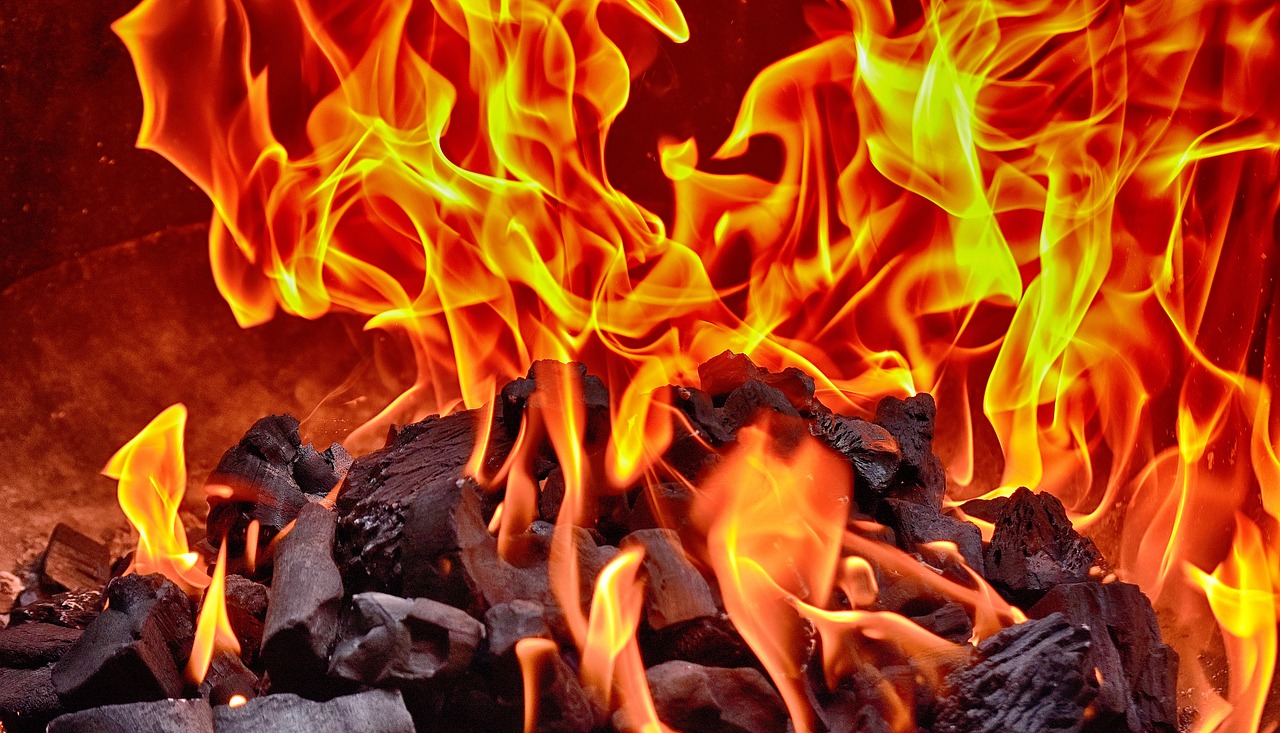
Creating a Fire Escape Plan
When it comes to ensuring the safety of your loved ones during a house fire, having a well-constructed fire escape plan is nothing short of essential. Think of it as your family's lifeline in a crisis; without it, you might find yourself fumbling in the dark when every second counts. So, how do you create an effective fire escape plan? It’s simpler than you might think! Start by mapping out your home and identifying all possible exits, including doors and windows. Remember, the goal here is to have multiple escape routes in case one becomes blocked.
Next, gather your family together to discuss the plan. This isn’t just a boring meeting; it’s an opportunity to engage everyone and ensure that everyone knows their role. You might even turn it into a fun family activity! Make sure to assign a specific meeting point outside the house where everyone can gather after escaping. This could be a neighbor's house, a tree, or any other easily identifiable spot. The important thing is that it’s a safe distance from the home.
Now, let’s talk about the nitty-gritty details. Here’s a quick checklist of what to include in your fire escape plan:
- All possible exits from each room
- A designated meeting point outside
- Escape routes for children and pets
- Emergency contact numbers
Once you've outlined your plan, it’s crucial to practice it regularly. Just like you wouldn’t run a marathon without training, you shouldn’t wait for a fire to break out to test your escape plan. Conduct fire drills at least twice a year. This not only helps everyone remember the escape routes but also builds confidence in handling the situation. During these drills, pay attention to how quickly everyone can exit the house. You might find that some routes are easier or faster than others, and you can adjust your plan accordingly.
Involving children in the planning process can also be a game-changer. Kids often feel scared or confused during emergencies, so teaching them about fire safety can empower them. Use engaging methods, like role-playing or even drawing maps of the escape routes. Make it fun! The more they understand, the better prepared they’ll be. You can also involve them in choosing the meeting point, making it feel like a team effort.
Lastly, don’t forget to review your plan regularly. Life changes, and so do your living arrangements. New furniture, renovations, or even new family members can impact your escape routes. Make it a habit to revisit your fire escape plan every six months or whenever there’s a significant change in your home. Remember, the best time to prepare for a fire is before it happens. By taking these proactive steps, you’re not just creating a plan; you’re taking control of your safety and well-being.
Q: How often should I practice my fire escape plan?
A: It’s recommended to practice your fire escape plan at least twice a year. Regular drills help reinforce the plan and ensure everyone knows what to do in case of an emergency.
Q: What should I do if my escape route is blocked by fire?
A: Always have multiple escape routes planned. If one route is blocked, immediately use the alternative route. If all exits are blocked, stay low to avoid smoke inhalation and signal for help from a window.
Q: How can I involve my children in the fire safety plan?
A: Engage your children by making the planning process fun. Use games, drawings, or role-playing to teach them about escape routes and the importance of fire safety.
Q: Should I include pets in my fire escape plan?
A: Absolutely! Make sure to include your pets in the plan. Designate someone to be responsible for them during an emergency and ensure everyone knows how to quickly get them to safety.
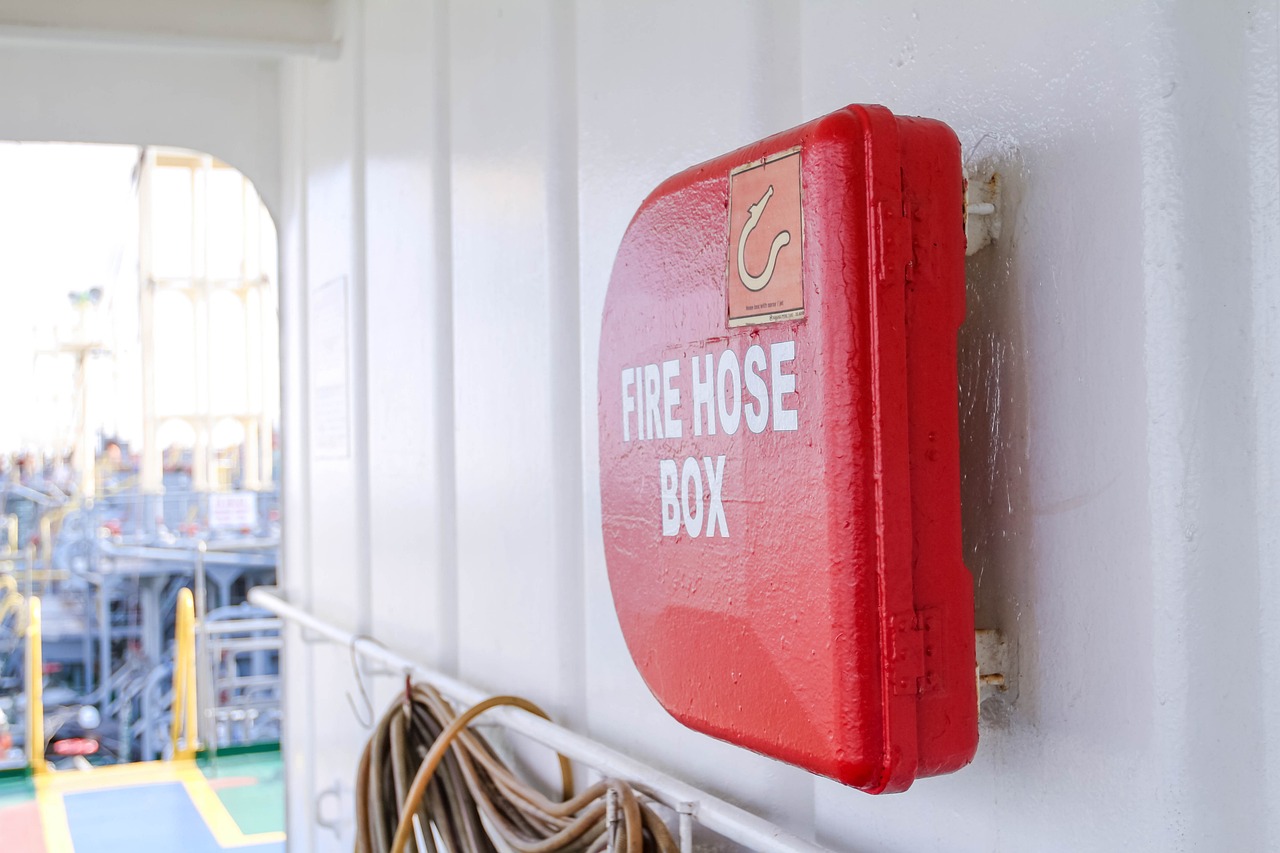
Designating Safe Meeting Points
When a fire breaks out, every second counts. That's why outside your home is not just a good idea—it's a lifesaver. Imagine the chaos of trying to account for everyone amidst the smoke and flames. By having a predetermined location, you can quickly gather and ensure that everyone is safe. So, where should you choose these meeting points? Ideally, they should be a safe distance from your home, away from any potential hazards like downed power lines or exploding gas tanks. Think about a neighbor’s yard, a nearby tree, or even a designated spot across the street. The key is to ensure that it’s easily identifiable and accessible for everyone in your household.
Once you've selected a meeting point, it’s crucial to communicate this information to all family members. Make sure everyone knows where to go and what to do. You could even create a simple map or diagram to illustrate the route to the meeting point from different areas of the house. This visual aid can be particularly helpful for younger children or elderly family members who may need extra guidance during a stressful situation.
Now, let’s not forget about the importance of frequent discussions regarding these meeting points. Just like you wouldn’t expect a child to remember a new game without a few practice rounds, you shouldn't assume everyone will remember the escape plan without regular reminders. Make it a point to revisit the meeting location during family gatherings or even at dinner. This way, it becomes a part of your family culture, ingraining the importance of fire safety into your daily lives.
Furthermore, consider the psychological aspect of having a designated meeting point. In the midst of panic, it can be incredibly reassuring to know that you have a plan. This knowledge can help calm nerves and provide a sense of control during a chaotic situation. Encourage family members to visualize themselves reaching the meeting point, which can help them react more effectively in an emergency.
Lastly, remember to include pets in your fire escape plan. Designate a family member responsible for ensuring that pets are evacuated safely. You can also establish a secondary meeting point specifically for your furry friends. This way, you’re not only ensuring the safety of your loved ones but also your beloved pets.
- What should I do if someone is missing during a fire? If someone is unaccounted for, do not re-enter the home. Instead, inform the fire department as soon as possible.
- How often should we practice our fire escape plan? It's recommended to practice at least twice a year to keep everyone familiar with the plan.
- Can we change our meeting point? Yes! If your initial meeting point becomes unsafe or inaccessible, be sure to update your family and practice the new route.
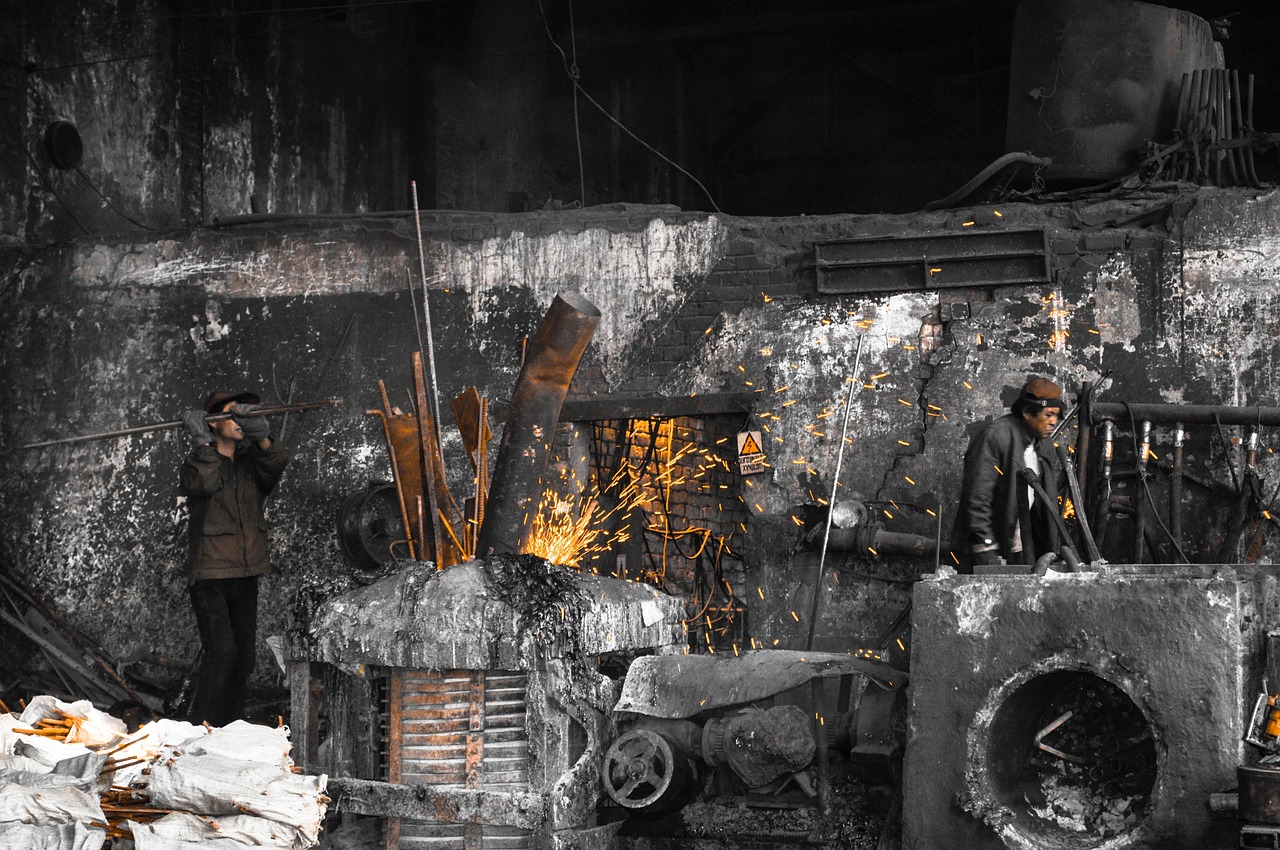
Involving Children in Planning
When it comes to fire safety, involving children in the planning process is not just a smart move; it's essential. Kids are naturally curious, and by engaging them in discussions about fire safety, you’re not only teaching them valuable skills but also empowering them to take the situation seriously. Imagine your child knowing exactly what to do in an emergency—it's a comforting thought, right? To make this learning process effective, consider using interactive methods. For instance, you could create a fun game that simulates a fire drill, allowing them to practice their escape routes while keeping the atmosphere light and enjoyable.
Start by explaining the importance of having a fire escape plan in simple terms. Use analogies they can relate to, such as comparing the escape plan to a treasure map that leads them to safety. Children will grasp the concept better if they understand that the plan is their route to safety, much like how pirates follow a map to find treasure. Involving them in drafting the escape plan can also be a great bonding activity. Sit down together and draw out the layout of your home, marking the escape routes with bright colors. This visual representation can help them remember the paths they need to take in case of an emergency.
Moreover, it’s crucial to discuss the designated meeting points outside the house. Make sure your child knows where to go once they are outside. This could be a neighbor's house, a tree, or any other easily recognizable landmark. Reinforce the idea that everyone should gather at this point to ensure that everyone is safe. To make it even more engaging, you could turn this into a scavenger hunt, where they have to find the meeting point from different locations in the house. This will not only make the learning process enjoyable but also ensure they remember the meeting point when it matters most.
Lastly, don’t forget to encourage questions. Children often have a lot of them, and answering them can help alleviate any fears they might have about fire. Create an open environment where they feel comfortable expressing their thoughts. You can even have a "fire safety day" where they can invite friends and share what they’ve learned. This not only reinforces their knowledge but also spreads awareness among their peers. Remember, the goal is to make fire safety a part of their everyday conversation, so they are always prepared, just like a superhero ready to save the day!
- What should I include in a fire escape plan?
Ensure your plan includes two exits from every room, a designated meeting point outside, and a way to communicate the plan to everyone in the household. - How often should we practice fire drills?
It's advisable to conduct fire drills at least twice a year to keep everyone familiar with the escape routes and procedures. - What age should children start learning about fire safety?
Children as young as four can start learning basic fire safety rules, but the planning process can involve older kids to ensure they understand the importance of safety. - Should I install smoke detectors in my children's rooms?
Yes, having smoke detectors in every room, including children's rooms, is crucial for early detection of fire hazards.
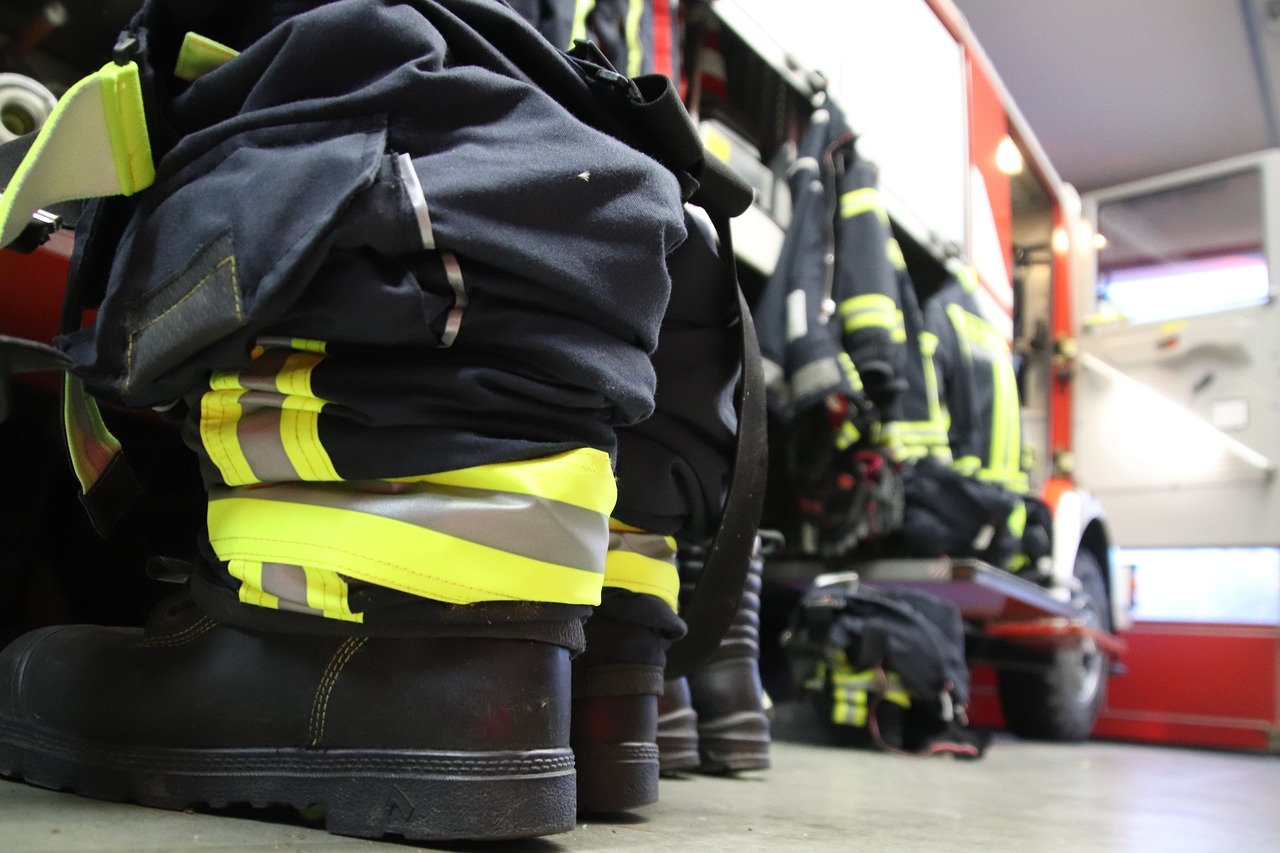
Practicing Your Escape Plan
When it comes to fire safety, having a plan is just the beginning. The real magic happens when you practice your escape plan. Think of it like rehearsing for a play; you wouldn't just memorize your lines and hope for the best, right? You’d run through the scenes until you’re confident and comfortable. The same goes for fire drills. Regular practice can make all the difference in ensuring that everyone knows exactly what to do when the flames start to rise.
Start by scheduling regular fire drills in your home. Make it a family affair! Choose a day and time when everyone can participate, and treat it like a fun event. During these drills, simulate a real fire scenario. You might want to set off a smoke alarm so everyone can experience the sound and urgency without the actual danger. This way, your family members will know the sound means they need to spring into action.
During the drill, remind everyone to stay calm and follow the escape routes you’ve established. As they practice moving quickly and efficiently, encourage them to stay low to the ground to avoid smoke inhalation, which can be deadly. You can even make it a game to see who can reach the designated meeting point outside the fastest, reinforcing the importance of speed in a real emergency.
It’s also essential to discuss what to do if family members are separated during the escape. Have a clear plan in place: if someone is in a different part of the house, they should know the nearest exit and how to get there. This is where designating safe meeting points becomes vital. Everyone should understand that they need to gather at a specific location outside the home, away from danger. This not only helps keep everyone safe but also makes it easier for you to account for everyone once you’re outside.
Remember, the goal of these practice sessions is to build confidence. The more familiar everyone is with the escape routes and procedures, the less panic they’ll feel in a real emergency. You might even want to include your pets in the drills! Practice grabbing them and getting out quickly. It’s all about creating muscle memory so that when the time comes, everyone knows exactly what to do without thinking twice.
After each drill, take a few minutes to discuss what went well and what could be improved. This feedback loop will help refine your escape plan and ensure that everyone feels prepared. You might even consider keeping a fire safety journal where you note the dates of your drills, what was practiced, and any changes made to the escape plan. This can be a valuable resource as your family grows or as you make changes to your home.
In conclusion, practicing your escape plan is not just a checkbox on your fire safety list; it’s a crucial step that can save lives. By making it engaging, regular, and reflective, you can ensure that your family is well-prepared to face any fire emergency that may arise.
- How often should we practice our escape plan? It's recommended to practice at least twice a year to keep everyone familiar with the procedures.
- What should we do if a family member is trapped inside? If someone is trapped, instruct them to stay low to the ground and signal for help from a window if possible. Never go back inside; instead, call emergency services immediately.
- Should we include pets in our escape plan? Absolutely! Make sure everyone knows how to quickly grab pets and get them to safety.
- What if my children are home alone during a fire? Teach them how to escape and where to meet you outside. Practice these scenarios during your drills.

Installing Fire Safety Equipment
When it comes to fire safety, installing the right equipment in your home can be a game-changer. It's like having a superhero on standby, ready to swoop in when danger strikes. First and foremost, you need to think about smoke detectors. These little devices are your first line of defense against fire. They’re designed to alert you at the earliest signs of smoke, giving you precious time to react. Ideally, you should install smoke detectors on every level of your home, especially in bedrooms and hallways. Remember, a smoke detector is only as good as its maintenance. Test them monthly, change the batteries at least once a year, and replace the entire unit every ten years.
Next up, we have fire extinguishers. Think of them as your trusty sidekick in the fight against flames. Having a fire extinguisher within reach can mean the difference between a small mishap and a full-blown disaster. You should place extinguishers in key locations such as the kitchen, garage, and near any heat sources. When you purchase a fire extinguisher, look for one that is labeled as multi-purpose (typically labeled as ABC), which can handle different types of fires, from grease to electrical. Don’t forget to familiarize yourself and your family with how to use it. The acronym PASS can help you remember the steps:
- Pull the pin.
- Aim low at the base of the fire.
- Squeeze the handle.
- Sweep side to side.
Another essential piece of equipment is a carbon monoxide detector. This device is crucial because carbon monoxide is a silent killer. It’s colorless and odorless, making it nearly impossible to detect without a detector. Install these alarms near sleeping areas and on every level of your home. Just like smoke detectors, remember to test them regularly and replace them as needed.
In addition to these devices, consider investing in a fire blanket. This simple yet effective tool can be used to smother small fires or wrap around a person whose clothing has caught fire. Store it in an easily accessible location, and make sure all family members know where it is and how to use it. Lastly, don’t overlook the importance of having a fire escape ladder if you live in a multi-story home. In the event of an emergency, these ladders can provide a safe exit from upper floors.
To sum it up, installing fire safety equipment is not just about ticking boxes; it’s about creating a safety net for you and your loved ones. Regular maintenance, proper placement, and education on how to use these devices are key components of an effective fire safety strategy. Remember, being proactive today can save lives tomorrow!
Q: How often should I test my smoke detectors?
A: You should test your smoke detectors at least once a month to ensure they are functioning properly.
Q: How do I know when to replace my fire extinguisher?
A: Fire extinguishers should be replaced every 10 to 12 years, or sooner if they have been used or show signs of damage.
Q: Where should I install smoke detectors?
A: Install smoke detectors on every level of your home, inside each bedroom, and outside sleeping areas.
Q: What type of fire extinguisher should I buy?
A: Look for a multi-purpose fire extinguisher labeled as ABC, which can handle a variety of fire types.
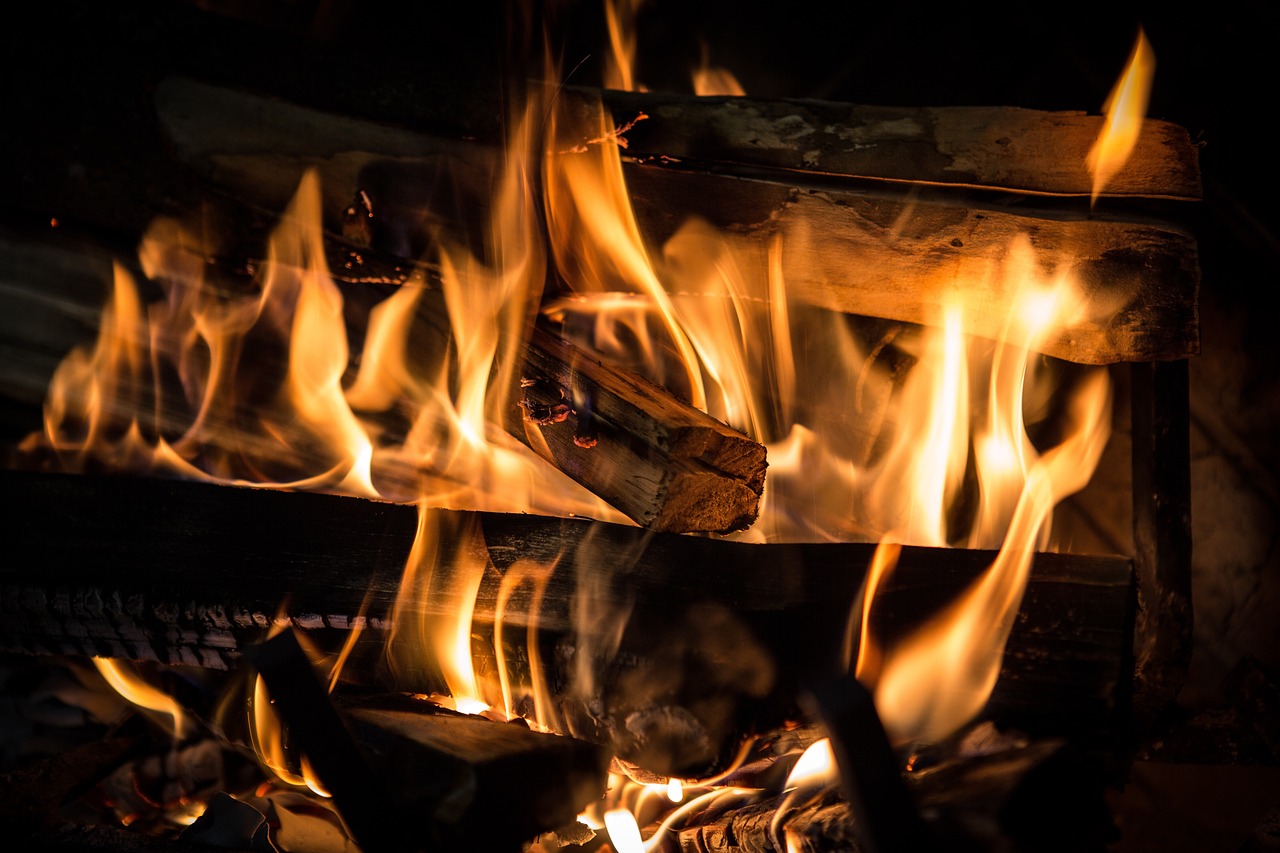
Responding During a Fire
When a fire breaks out, every second counts. Knowing how to react can mean the difference between life and death. The first thing to remember is to stay calm; panic can cloud your judgment and slow you down. As you assess the situation, your instincts will kick in, guiding you through the chaos. But what should you do first? The answer lies in a few simple yet crucial steps that can help you navigate the flames and smoke safely.
First and foremost, always prioritize your safety and that of your loved ones. If you hear the alarm or see flames, don’t waste time trying to gather valuables or possessions. Instead, your focus should be on getting everyone out of the house as quickly as possible. This is where your fire escape plan comes into play. Having a designated route and knowing where to go can save precious minutes. If your escape route is blocked by fire or smoke, it’s essential to have an alternate route planned, which is why practice is so important.
As you make your way to safety, remember to stay low to the ground. Smoke rises, and inhaling it can be deadly. By staying low, you’re avoiding the worst of the smoke and increasing your chances of making it to safety. Think of it like crawling under a low-hanging branch in a dense forest; you’re avoiding the danger above while still moving forward. This technique is especially vital if you encounter thick smoke. If you can, cover your mouth with a cloth—preferably wet—to filter out some of the harmful particles.
Once you’re outside, don’t go back in. It’s natural to want to rescue pets or grab belongings, but re-entering a burning building is extremely dangerous. Instead, head to your predetermined meeting point where everyone can gather and account for one another. This way, you can ensure that everyone is safe and accounted for before contacting emergency services.
Now, what if you encounter a small fire that you feel confident you can extinguish? In that case, knowing how to use a fire extinguisher properly is essential. Remember the acronym PASS:
- Pull the pin.
- Aim low at the base of the fire.
- Squeeze the handle slowly.
- Sweep side to side.
Understanding this simple method can help you tackle small fires before they escalate. However, if the fire grows or you feel overwhelmed, evacuate immediately. The safety of you and your family is the priority.
Finally, once you've escaped and are safely outside, call 911 or your local emergency number to report the fire. Provide them with as much information as possible, including your location and any details about the fire’s size and spread. This information can help firefighters respond more effectively.
In summary, responding to a fire requires quick thinking and adherence to safety protocols. By staying calm, knowing your escape routes, staying low, and understanding how to use fire extinguishers, you can significantly improve your chances of surviving a house fire. Remember, preparation is key, and having a plan will make all the difference when it matters most.
Here are some common questions people have about responding during a fire:
- What should I do if I get trapped in a room? If you find yourself trapped, close the door and seal any cracks to prevent smoke from entering. Signal for help through a window and call 911 if you can.
- How can I teach my children about fire safety? Engage them in discussions about fire safety, conduct drills, and use educational resources designed for kids to make learning fun and effective.
- What are the signs of a fire hazard in my home? Common signs include frayed wires, flickering lights, and the smell of smoke or burning. Regular inspections can help catch these issues early.
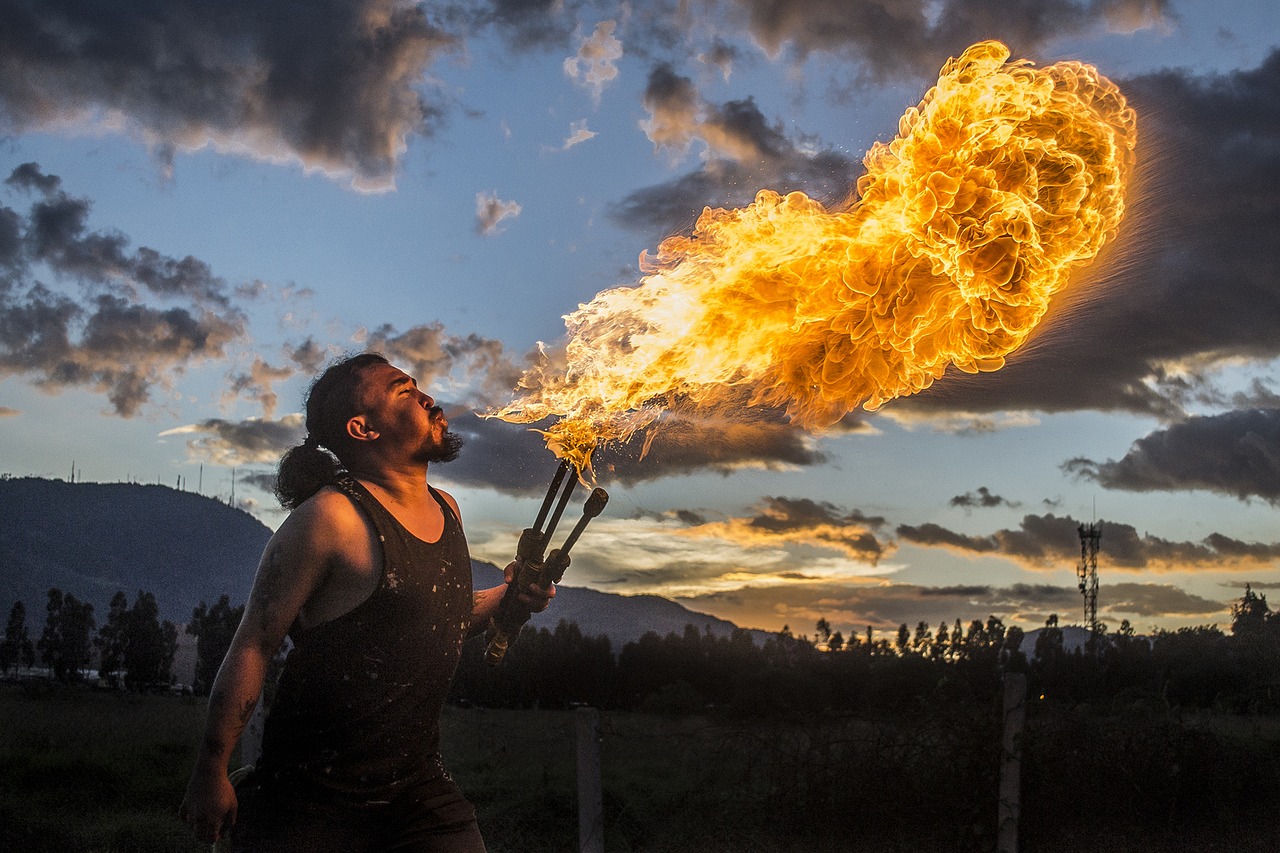
Staying Low and Moving Quickly
When a fire breaks out, every second counts. The smoke can be thick and suffocating, making it crucial to understand the importance of . Why, you ask? Well, smoke rises, and the air closer to the ground is often much clearer and easier to breathe. Imagine a thick fog rolling in; the lower you are, the easier it is to see through it. This simple yet effective strategy can be the difference between safety and danger.
As you make your way to safety, remember that the path to the exit may not always be obvious. Familiarizing yourself with your home's layout can help you navigate through the darkness. Keep in mind that you might encounter obstacles such as furniture or fallen debris, so staying low allows you to avoid these hazards more effectively. It’s like being a secret agent on a mission—crawling stealthily to avoid detection, but in this case, the threat is very real.
Here are some quick tips to keep in mind:
- Stay Low: Get down on your hands and knees if necessary. This minimizes smoke inhalation and keeps you closer to the fresh air.
- Cover Your Mouth: Use a cloth or shirt to cover your mouth and nose. This can help filter out some of the smoke.
- Move Quickly: Once you know your escape route, don’t hesitate. Move swiftly but carefully to avoid tripping over obstacles.
Additionally, if you're with family members, make sure to communicate. Shouting can waste precious time and energy. Instead, use hand signals or gestures to guide each other. It’s like a game of charades, but with a much more serious goal in mind. The quicker everyone understands the plan, the faster you can all get to safety.
Finally, if you encounter a door that feels hot to the touch, do not open it. This could indicate that there is fire on the other side. Instead, look for an alternative escape route. Remember, your safety is the top priority. By staying low and moving quickly, you not only increase your chances of escaping unharmed but also set a positive example for others around you.
Q: Why is it important to stay low during a fire?
A: Staying low helps you avoid inhaling smoke, which is often more toxic and dense at higher levels. The air near the ground is typically clearer and easier to breathe.
Q: What should I do if I encounter smoke while escaping?
A: If you encounter smoke, stay low to the ground and move quickly towards your exit. Cover your mouth and nose with a cloth to help filter out some of the smoke.
Q: How can I ensure my family knows what to do during a fire?
A: Regularly practice your fire escape plan and involve all family members in the planning process. Make sure everyone understands the escape routes and safe meeting points.
Q: What if I can't escape through the usual exits?
A: Always have alternative escape routes in mind. If a door is hot, look for windows or other exits. If you are trapped, stay low, seal the door with clothes or towels, and signal for help if possible.

Using Fire Extinguishers Properly
When it comes to fire safety, knowing how to use a fire extinguisher can be the difference between a minor incident and a catastrophic event. It’s like having a superhero in your home, ready to swoop in and save the day when flames start to flicker. But just like any superhero, you need to know how to wield that power effectively. The first step is to familiarize yourself with the different types of fire extinguishers and their designated uses. For instance, you wouldn’t use a water extinguisher on an electrical fire, right? Understanding the PASS technique is crucial for operating a fire extinguisher effectively:
- Pull the pin: This unlocks the extinguisher and allows you to use it.
- Aim low: Point the nozzle at the base of the fire, not the flames.
- Squeeze the handle: This releases the extinguishing agent.
- Sweep from side to side: Move the nozzle in a sweeping motion to cover the fire.
Before you ever face a fire, it’s important to practice this technique. You might think, “But how often do fires happen?” The answer is: often enough that being prepared can save lives. Regular training sessions, perhaps during your family fire drills, can ensure that everyone knows how to use the extinguisher properly. Keep in mind that extinguishers have a limited range; typically, you should aim to be within 6 to 8 feet of the fire, so don’t hesitate to get close—just make sure the flames aren’t too high or out of control.
Additionally, make sure your fire extinguishers are easily accessible and regularly maintained. Check the pressure gauge monthly and ensure that they are not expired. A fire extinguisher is like a life jacket; it’s only effective if it’s in good shape when you need it. Consider creating a maintenance schedule, perhaps marking it on your calendar, to remind you when it’s time to check those vital devices.
In the unfortunate event that a fire does break out, always remember: if the fire is spreading rapidly or if you feel unsafe, evacuate immediately and call 911. Your safety is paramount, and while extinguishers are useful tools, they’re not a substitute for professional help. Think of them as your first line of defense, but never hesitate to retreat if things get out of hand.
In summary, using a fire extinguisher properly involves understanding its operation, practicing the PASS technique, and ensuring regular maintenance. Equip yourself with knowledge and preparedness, and you’ll be ready to tackle small fires before they escalate into something far more dangerous.
- Q: How do I know which fire extinguisher to use?
A: Different extinguishers are designed for different types of fires. Look for the labels that indicate their use: Class A for ordinary combustibles, Class B for flammable liquids, Class C for electrical fires, and so on. - Q: How often should I replace my fire extinguisher?
A: Fire extinguishers should typically be replaced every 5 to 15 years, depending on the type. Always check the manufacturer’s instructions for specific guidance. - Q: Can I use a fire extinguisher on a grease fire?
A: No, never use water or a regular fire extinguisher on a grease fire. Use a Class K extinguisher or cover the fire with a metal lid to smother it.
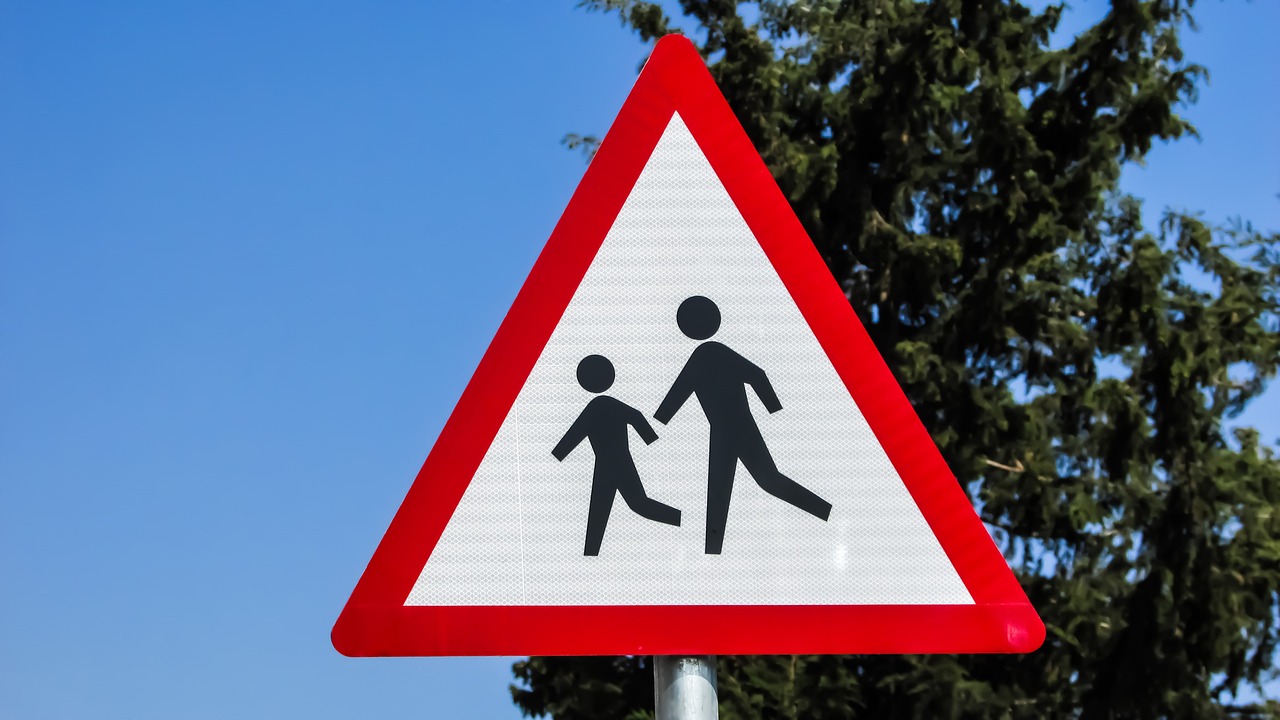
Post-Fire Recovery Steps
Experiencing a house fire can be one of the most traumatic events in a person's life. The aftermath can leave you feeling overwhelmed, confused, and unsure of what to do next. However, taking the right steps can help you regain control and start the recovery process. First and foremost, ensure that you and your loved ones are safe and that everyone has been accounted for. Once safety is confirmed, it's time to address the practical aspects of recovery.
One of the first things you should do is contact your local authorities to report the fire if you haven't already. This is crucial for documentation purposes and for any potential investigations that may follow. After that, reach out to your insurance company. Documenting the damage is essential for filing a claim, and taking photos can help substantiate your case. Make a detailed list of all damaged or destroyed items, including their approximate value. This information will be vital when dealing with your insurance adjuster.
In the days following the fire, you may find it necessary to secure your property. This can involve boarding up windows and doors to prevent theft or further damage from the elements. If your home is deemed unsafe, you might need to find temporary housing. This can be a challenging time, but many organizations, including the Red Cross, offer support for those displaced by fires.
While dealing with the physical damage, don’t forget about the emotional toll that a fire can take. It’s normal to feel a range of emotions, from shock and sadness to anger and anxiety. Seeking support from friends, family, or professional counselors can be incredibly beneficial. Remember, you’re not alone, and there are resources available to help you navigate this difficult time.
As you begin the recovery process, consider the following steps:
- Assess the Damage: Work with professionals to determine the extent of the damage and what repairs are needed.
- Clean Up Safely: Be cautious when cleaning up debris. Wear protective gear and avoid touching hazardous materials.
- Rebuild and Restore: Once the damage has been assessed, you can start planning for repairs and rebuilding. This might include hiring contractors and getting necessary permits.
- Reevaluate Fire Safety: After the experience, it’s a good idea to reassess your fire safety measures and make necessary improvements to prevent future incidents.
Finally, as you move forward, take the time to reflect on what you’ve learned from this experience. Consider involving your family in discussions about fire safety to ensure everyone understands the importance of preparedness. This can be a valuable opportunity to strengthen your family's bond while also enhancing your safety measures.
Q: What should I do immediately after a fire?
A: First, ensure that everyone is safe and accounted for. Then, contact the authorities and your insurance company to report the incident and begin documenting the damage.
Q: How can I support my emotional well-being after a fire?
A: It's essential to talk about your feelings with friends, family, or a counselor. Joining support groups can also be beneficial.
Q: What steps can I take to prevent future fires?
A: Regularly check smoke detectors, create and practice a fire escape plan, and ensure that your home is free from common fire hazards.
Frequently Asked Questions
- What are the most common causes of house fires?
House fires can ignite from various sources, but some of the most common culprits include cooking accidents, electrical malfunctions, heating equipment failures, and careless smoking. It's crucial to stay vigilant and regularly check for potential hazards in your home.
- How can I create an effective fire escape plan?
To develop an effective fire escape plan, start by mapping out all exits in your home, including doors and windows. Designate a safe meeting point outside where everyone can gather after escaping. Practice the plan regularly with your family to ensure everyone knows what to do in case of an emergency.
- Why is it important to involve children in fire safety planning?
Involving children in fire safety planning is essential because it helps them understand the seriousness of fire safety and prepares them to act quickly and calmly during an emergency. Teaching them about escape routes and what to do in case of a fire can empower them and reduce panic.
- What type of fire safety equipment should I have in my home?
Your home should be equipped with smoke detectors, fire extinguishers, and, if possible, a fire blanket. Make sure to test smoke detectors monthly and replace batteries as needed. Fire extinguishers should be easily accessible and you should know how to use them properly.
- What should I do if a fire breaks out in my home?
If a fire breaks out, remain calm and follow your escape plan. Stay low to the ground to avoid smoke inhalation, and use your pre-designated exits. If the fire is small and manageable, you can attempt to use a fire extinguisher, but prioritize getting to safety first.
- How can I recover from a house fire?
Recovery from a house fire involves both emotional and practical steps. Start by contacting authorities and your insurance company to report the incident. Assess the damages and keep records of everything. Seek support from friends, family, or professionals to help cope with the emotional aftermath.



















